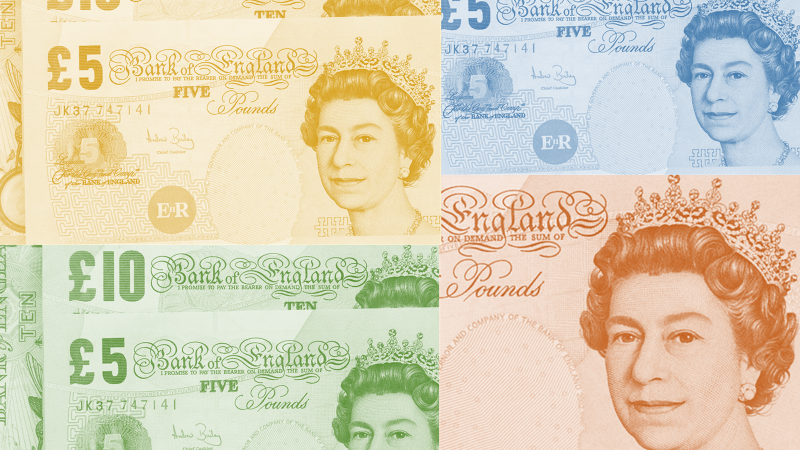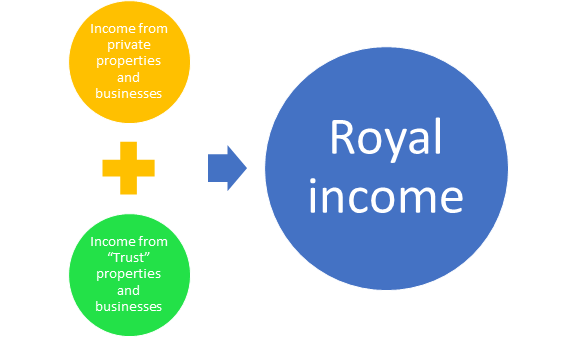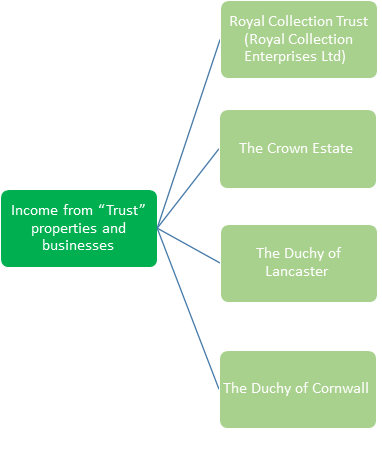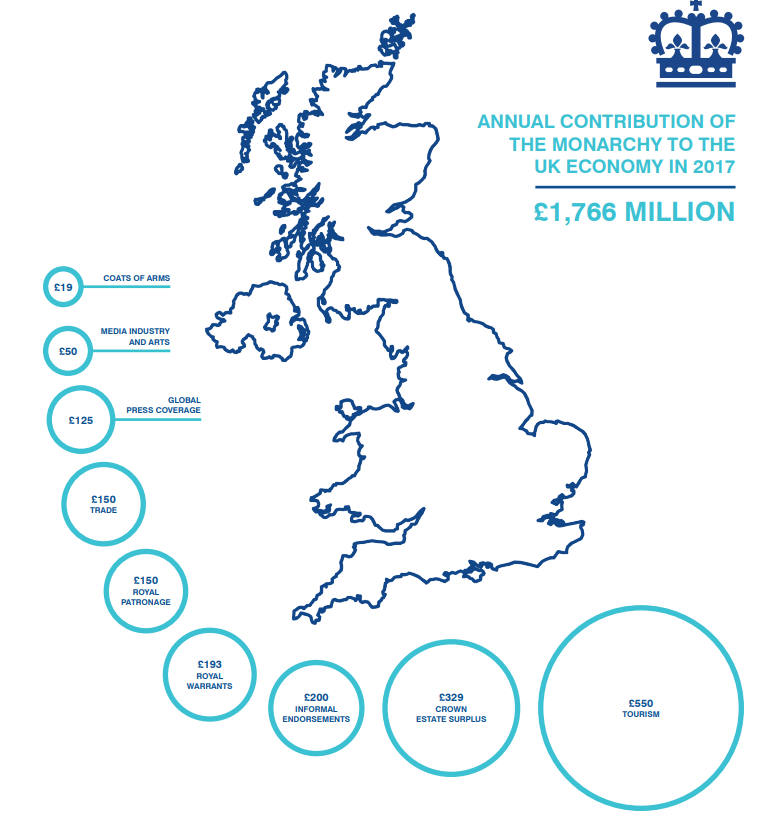The Queen manages a portfolio of businesses – including a McDonald’s branch
Article Date | 30 October, 2020
By Shan Wikoon , Lecturer in Business, Elephant and Castle Campus
Queen Elizabeth II has reigned as the British monarch since 1952, making her the longest-reigning monarch in our history. The Queen is one of the world’s most known and respected individuals and has been an important figurehead for the UK and the Commonwealth during times of enormous societal change. However, although living a life in the global public eye, there are surprising facts you perhaps did not know about The Queen.
Did you know that The Queen also runs many businesses? This is my go-to opener when lecturing business students for the first time. It is a fascinating question and gets students thinking and talking.
Great Britain is a land of business entrepreneurs and the British Royal Family is no exception. Frankly, The Queen is an autonomous business entity with an impressive money-making stance. She holds both private and ‘Trust’ properties and well-managed businesses that pump money to roll the wheels of the ‘British Royal’ system.
Despite popular belief, due to such ‘Royal’ business activities, the British taxpayers are not spending a fortune on providing for and maintaining the Royal family except bearing the cost of their VIP security. The Royal income is derived from two primary sources. The Queen and the other family members have their private property and businesses as individuals. They pay tax for the profit of their private businesses. The family also receive a hefty sum of money from other property portfolios that they hold as the trustees – or ‘trust properties and businesses`. The core difference between the concepts of ‘private’ and ‘trust’ is that trust properties cannot be sold or destroy by the trustees (owners). The profit of the ‘trust businesses’ cannot be used by the trustees for private purposes. In contrast, private properties can be sold, destroyed, or used for any purposes by the owner. The owners of the private business can use the profit of such businesses for any purposes as they wish.

Income from private properties and businesses
It is not easy to find much information about private properties and income of the Royal family as they are indeed “private and confidential.” According to the official website of the British Royal family, Sandringham and Balmoral estates are owned by The Queen and were both inherited from her father. Let us look at The Queen’s private properties in detail:

Sandringham Estate
The Queen is the only owner of Sandringham estate. (The Royal Household, 2020). Sandringham is a vast farming land that is comprised of 8,000 hectares. If you try to visualise 8,000 Rugby fields together, then the size that may come to your mind is relatively equal to the size of this estate. Six thousand four hundred hectares of the estate is farmland. It also has 1,400 hectares of woodland. Another 80 hectares are used to cultivate orchards and soft fruits such as wheat, barley, beans, oats, and blackcurrants. The estate employs around 200 employees.
Sandringham estate is one of the 40 blackcurrant suppliers for Ribena that are very popular in the UK. The estate management has implemented the organic farming methods such as six-year rotation method and agroforestry since 2018 as they recognise social responsibility and the emerging demands. Now, the estate produces organic, 100% forage-fed lamb for the Sandringham Café & Coffee Shop, a local butcher, and a premium retailer. To improve productivity and safety, managers of the estate utilise modern technology such as satellite navigation for control trafficking and yield mapping.
Another income source of the estate is renting the land. Half of the estate (4000 hectares) is rented out, and the estate receives a considerable rental income. If any of the readers would like to rent a beautiful country house within the estate, you should visit the property rental webpage of Sandringham https://sandringhamestate.co.uk/about-us/properties. The webpage states,
“The Sandringham estate frequently has properties available for rental across 13 villages, from Wolferton across to Bircham. Sandringham’s housing policy is to let properties as a primary residence, prioritising those who live and work locally. Properties are not let on a first-come, first-served basis, but rather on which prospective tenant is best suited to the property.” (sandringhamestate.co.uk, 2020)
If you rent out one of those properties, you are entering a tenancy contract with the estate but, The Queen is your actual ‘landlady’ and neighbour.
Apart from the farming business, The Queen is also keen on the tourism and hospitality business. Sandringham village is blessed by outstanding natural beauty. There is a large house within a garden of 24 hectares called Sandringham house where Her Majesty resides from Christmas until February every year. The estate uses those ‘Royal’ factors to attracts visitors.
The Queen earns a considerable amount of money by opening the estate to the public during the summertime. One adult ticket (to visit both house and the garden) is priced at £15.30 in 2020. The car parks of the estate are free for the visitors of the house and garden. But anybody else can also use the car parks for a fee (£7 per day in 2020). To attract more visitors, the estate runs Sandringham Transport Museum, where the visitors can see the first-ever motor car owned by a member of the Royal Family. When a place such as a museum or garden in the UK is opened for visitors, two other types of businesses also joined with that money-making machine: the gift shop and the café. The businesses of Sandringham estate also use those usual cash cows. Undoubtedly, a good income would be generated through The Sandringham Gift Shop and Sandringham Café in addition to the income from admission tickets. According to The Dailymail (dailymail.co.uk, 2019), half a million people visited the estate in 2018. If we assume that each visitor spent £10 during the visit, the total income from the tourism and hospitality business of Sandringham estate would be £5,000,000 in the year 2018.
Balmoral estate
Balmoral is the second estate that is owned by The Queen. The official website of the estate portrays as “The Scottish holiday home to the Royal Family.” It has around 20,000 hectares of land. The estate has also rented sporting rights over another 4,688 hectares. The estate website further described the business aspects of the estate as,
“Balmoral is a working estate. Deer stalking, grouse shooting, forestry and farming are the main land uses. Parts of the Castle, gardens and exhibitions are open to the public from April to July. The estate provides an important recreational benefit to members of the visiting public and a range of user groups.” (balmoralcastle.com, 2020)
There are around 150 buildings, including beautiful cottages within the estate. These cottages can be rented by anyone when there are no Royal visits. The public can rent the large halls and the gardens for corporate events, public events, or personal event such as weddings. The Queen earns money by running many other recreational activities such as guided tours, garden walks, luxury land-rover safaris and slalom fishing. The most popular activity would be the Golf in Balmoral where there is a nine-hole eighteen tee golf course.
The estate is open for public, but again, it is for a free. If you visit there, you will spend money on admission tickets, car parking, gifts at the gift shop and food and drinks at the café. The total profit earned by The Queen with her Balmoral estates is difficult to calculate due to lack of information.
Income from ‘Trust” properties and businesses of Royals’
Apart from Sandringham and Balmoral estate, all other Royal properties such as Buckingham Palace and Winsor castle are not owned by The Queen privately. Still, she holds those properties as Sovereign on behalf of the nation. The famous Crown Jewels and other treasures displayed in the Tower of London also ‘Trust properties’ and not the private properties of the Royals. The trust properties cannot be sold by the Royals. The profit of trust businesses cannot be used by the Royals for their private affairs. However, the profit of the trust properties is used to cover the cost of official duties of The Queen and her representatives. For example, The Queen herself meets and entertains almost 50,000 people, including leaders of other nations each year. The Royal Household outlines the work of Royals in 2018- 2019 financial year as follows.
“Over 3,200 official engagements across the UK and overseas undertaken by members of the Royal Family. Over 160,000 guests welcomed at Royal Palaces at events such as garden parties and investitures. Over 7.9m people saw items from the Royal Collection Trust in Royal Palaces.” (The Royal Household, 2019)
All those Royal parties and engagements cost money. The main trust properties and businesses that the British Royals hold and obtain the income from are
• Royal Collection Trust (Royal Collection Enterprises Ltd)
• The Crown Estate
• The Duchy of Lancaster
• The Duchy of Cornwall

Most of the Royal residences such as Buckingham Palace, Windsor Castle, Clarence House, and Palace of Holyroodhouse are partly opened for the public. The total number of visitors in 2019 to all Royal residences was 3,178,000. The income generated from admission tickets alone by the Trust in 2019 is £48,015,000. A range of additional income is generated through guided tours, sales of tour books, food, drinks, gifts, and other merchandise. The public can buy merchandise with the Royal brand via the online shop available at https://www.royalcollectionshop.co.uk.
Let us not forget that the Royal residences are not empty buildings. Around 15 Royal residences house the world-famous collection of art including paintings and miniatures, drawings, prints and photographs, furniture, sculpture, jewellery, porcelain, clocks, and arms and armour. The Trust’s webpage introduces the collection as
“The Royal Collection is one of the largest and most important art collections in the world and one of the last great European royal collections to remain intact. Comprising almost all aspects of the fine and decorative arts and running to more than a million objects, the Collection is a unique and valuable record of the personal tastes of kings and queens over the past 500 years.” (The Royal Collection Trust, 2020)
The Trust maintains a huge library that has thousands of photographic materials of the collection as well as the interior and exterior of the places. It derives more income, by granting rights to use those photographic materials in books, television programmes and other media. For example, many historically significant works of Leonardo Da Vinci are the trust properties of The Queen. You have to pay the copyright holder, The Queen, a fee of £80 if you would like to reproduce the below image in print up to 5000 copies in colour (world right, one language).
LEONARDO DA VINCI (VINCI 1452-AMBOISE 1519) The Head of Leda c.1505-8.

The reader can gather more information about the image on https://www.rct.uk/collection/search#/2/collection/912518/the-head-of-leda.
The Royal Collection Trust earns money from licencing, sponsorships, and other investments. The public and organisations donate money too. The total revenue of the Trust in the accounting year 2019 was £72,091,000. These figures were taken from the company’s annual financial report of 2019 that was submitted to the UK Companies House GOV UK. (Royal Collection Enterprises Ltd, 2019)
The Crown Estate
The Crown Estate is the most financially valuable trust property and the largest income source of the British monarch. Most of the official expenditure of The Queen is met by this income source. It is a £14.3 billion UK real estate business with a magnificent and diverse portfolio. The Crown Estate owns most of the freehold buildings in London’s Regent Street. In 2019, the net revenue profit was £343.5 million with other impressive achievements such as + 15.4% Improvement year-on-year in carbon emissions intensity (The Crown Estate, 2020). It is a modern and independent commercial property business that is managed by a professional board on behalf of the HM Treasury and The Queen. The annual report of the estate explained its business activities as follows.
“Our Central London portfolio includes some of London’s most iconic places to shop, work, live and visit. Our interests extend to 9.9 million sq. ft and we are evolving our office, retail and dining destinations and public spaces to meet the needs of today’s customers and visitors, ensuring that London remains a thriving world city. Our 7.2 million sq. ft Regional portfolio is focused on prime retail and leisure destinations across the country. We tailor our approach at each of our locations, creating vibrant places that people want to explore, and which meet the needs of visitors and the local community. Across our Energy, Minerals & Infrastructure portfolio, we play an active role in facilitating the development of the offshore wind, cables, pipelines, and marine aggregates sectors. As the manager of the seabed around England, Wales, and Northern Ireland, we work in partnership with our customers and stakeholders to support its long-term, sustainable development. We manage a portfolio of rural land, around half of the foreshore, and the 15,800 acres Windsor estate which includes Windsor Great Park. We ensure that the land we own is sustainably worked and managed, creating value for our customers and visitors.” (The Crown Estate, 2020)
However, The Queen cannot obtain all the profit of the estate because of the restrictions stipulated on the Sovereign Grant Act 2011. (legislation.gov.uk, 2011) Currently, The Queen receives 25% of the income account net surplus of the Crown Estate for the financial year two years previous. It was called the “Sovereign Grant.” The rest of the income is transferred to the UK government every year. Annual Report and Accounts 2018-19 of the Grant specifies the financial situation as follows.
“The Core Sovereign Grant is calculated based on 15% of the income account net surplus of the Crown Estate for the financial year two years previous. The Crown Estate surplus for the financial year 2016-17 amounted to £328.8 million, thereby producing a Core Sovereign Grant of £49.3 million for 2018-19. The Royal Trustees agreed that from 2017-18, the Sovereign Grant would be calculated based on 25% of the income account net surplus of the Crown Estate for the financial year two years previous, with the additional 10% to be used to fund the Reservicing of Buckingham Palace over a period of ten years. The additional Sovereign Grant for Reservicing for 2018-19 is £32.9 million and the total Sovereign Grant for 2018-19 is therefore £82.2 million.” (The Royal Household, 2019)
The Duchy of Lancaster
This is an estate that has assets worth around £538.5 million (as at the end of March 2020) and a steady income that is generated from agricultural, commercial, residential, and foreshore/mineral business activities. The duchy manages nearly 18,000 hectares of land; 315 residential properties; a growing portfolio of commercial, retail, and industrial properties across England and Wales including the Savoy estate in London and the Harrogate estate in Yorkshire. The duchy also invested heavily in financial assets such as equities, bonds, and other investments. For the year 2019, the estate generated a net surplus of £23.2 million for The Queen. (The Duchy of Lancaster, 2020)
Duchy of Lancaster is pumping the net revenue of the estate to the personal wallet (also called Privy Purse) of The Queen as she uses that income to cover both official and private expenditure of her which is not met by the Sovereign Grant. According to the Royal household webpage on Royal finances (The Royal Household, 2020), the income is used primarily to meet expenses incurred by other members of the Royal Family. The Queen pays tax on Privy Purse income to the extent that the income is not used for official purposes. (HM Government, 2013) However, how she spends that money on her non-official necessities and the necessities of her family members is not very clear. (Travis, 2020) Therefore, the duchy of Lancaster is a semi-private, semi-trust property in the eyes of the law. The readers can find the annual accounts of Duchy of Lancaster at: www.duchyoflancaster.co.uk/wp-content/uploads/2018/07/2018-DoL-Annual-Report-and-Accounts.pdf
The Duchy of Cornwall
The role of the heir to the throne is also very prominent in the British political system. Prince Charles is the next in line to be the King of the United Kingdom. To fund his public and private life, including all the charitable work that he is leading, there is another highly successful business estate called The Duchy of Cornwall. It is described as one of the largest and oldest estates in Britain that currently owns and manages 55,149 hectares of land. In March 2020, the total asset of the estate was £908 million including liquid financial investments of £79.7million and commercial property valued at £295 million. The distributable surplus (profit) was £22.3 million for 2019-2020. The wife of the Prince, The Duchess of Cornwall, and his sons, Prince William and Prince Harry, run their private lives comfortably thanks to the income of this estate. Even though there is no legal obligation, the Prince of Wales voluntarily pays income tax for the estate’s income.
Prince Charles, who is a prominent advocate of environmental protection and conservation, directly influences the business activities of the estate. The business reflects the concepts of sustainable development and corporate social responsibility. You may find the following statements throughout the annual report of the estate.
“Achieving a balance between financial results, protecting the natural environment on which we all depend and supporting our communities has been at the heart of the Duchy ethos for many years.”
“Through our business model and under the leadership of The Duke of Cornwall, we approach our activities with commercial realism and social and environmental responsibility.”
“RENEWABLE ENERGY INSTALLED CAPACITY 3.0MW of installed capacity (up from 2.9MW last year) in solar PV, biomass boilers, heat pumps and a hydro-electric scheme, at the cost of £4.0m” (The Duchy of Cornwall, 2020)
Money-Making “Royal” Machine
This blog would not be completed unless we explore how Great Britain utilises The Queen and her family to earn money for the nation. If you have a brand that is very popular around the whole world, you can produce and sell many products and services without much hassle. In the same way, the UK uses the Royal family as a trademark or a brand of Great Britain. According to a leading brand and business valuation consultancy Brand Finance, total worth of the UK Monarchy as a business was £67.5bn in 2017. The UK Monarchy made a staggering £1.766bn to the UK economy in the same year. This included the Crown Estate surplus of £329 million. British media and artists used the Royals to earn £50 million while the global media paid £125 million to cover the Royal news and stories. The most significant impact of the Royal family was on the UK tourism sector that gained £550 million in 2017. The monarchy boosted many British brands using Royal Warrants and Coat of Arms directly and then indirectly helped to improve British trade by informal endorsements. The summary of the Brand Finance estimation can be found below. (Brand Finance, 2017)
ANNUAL CONTRIBUTION OF THE MONARCHY TO THE UK ECONOMY IN 2017

To conclude this blog, the writer would like to share the comments of David Haigh, CEO of Brand Finance.
“The Monarchy is Britain’s national treasure, both symbolically and economically. Especially in the age of Brexit, Britain can rely on royal diplomacy to facilitate trade relations with the Commonwealth and the rest of the world.”
Many entrepreneurs who dream of running and profiting from successful businesses do not have a well-established brand or thousands of hectares of inherited lands and properties same as the Royals. However, what we should learn from The Queen’s businesses is the qualities of flexibility and creativity in turning whatever you have into a money-making machine. The Queen is the Head of State of Great Britain and the leader of the commonwealth (a group of 54 countries working together for prosperity, democracy and peace). However, she also sells tickets to the tourists; sells cakes and tea in her cafes; sells gift items in her shops and rent outs her country cottages.
References
Brand Finance (2017) Monarchy 2017- The annual report on the value of the British Monarchy [Online] Available at https://brandfinance.com/images/upload/bf_monarchy_report_2017.pdf (Accessed 14 August 2020)
Colson, T. (21 May 2018) Inside the British Monarchy’s £13 billion property empire. Business Insider [Online] Available at https://www.businessinsider.com/how-much-of-the-uk-does-the-queen-own-2017-6?r=US&IR=T (Accessed 17 August 2020)
DAILY MAIL (8 October 2019) Queen is to boost income ‘by £1million a year’ by charging public to park at Sandringham. Dailymail. [Online] Available at https://www.dailymail.co.uk/news/article-7548459/Queen-boost-income-1million-year-charging-public-park-Sandringham.html (Accessed 14 August 2020)
HM Government (2013) Memorandum of Understanding on Royal Taxation [Online] Available at https://assets.publishing.service.gov.uk/government/uploads/system/uploads/attachment_data/file/208633/mou_royal_taxation.pdf (Accessed 14 August 2020)
Royal Collection Enterprises Ltd (2019) Annual report 2019 [Online] Available at https://beta.companieshouse.gov.uk/company/02778486/filing-history/MzI0NDA4ODUzMWFkaXF6a2N4/document?format=pdf&download=0 (Accessed 14 August 2020).
Munbodh, E. & Flaherty, J. (5 June 2020) The Queen owns a McDonald’s branch and it’s back open to the public. MSN News [Online] Available at https://www.msn.com/en-gb/news/newsliverpool/the-queen-owns-a-mcdonalds-branch-and-its-back-open-to-the-public/ar-BB154P5A (Accessed 17 August 2020)
Sovereign Grant Act 2011, C. 15 [Online] Available at https://www.legislation.gov.uk/ukpga/2011/15/contents(Accessed 14 August 2020)
The Crown Estate (2020) Our Annual Report 2018/19 [Online] Available at https://www.thecrownestate.co.uk/en-gb/our-business/2019-annual-report (Accessed 14 August 2020).
The Duchy of Cornwall (2020) INTEGRATED ANNUAL REPORT 2020 [Online] Available at https://duchyofcornwall.org/assets/images/DuchyOfCornwallIAR2020.pdf(Accessed 14 August 2020)
The Duchy of Lancaster (2020) Financial [Online] Available at https://www.duchyoflancaster.co.uk/financial (Accessed 14 August 2020)
The Royal Collection Trust (2020) ABOUT THE COLLECTION [Online] Available at https://www.rct.uk/collection/about-the-collection (Accessed 14 August 2020)
The Royal Collection Trust (2020), ABOUT THE COLLECTION [online] Available at https://www.rct.uk/collection/about-the-collection (Accessed 10 August 2020).
The Royal Collection Trust / © Her Majesty Queen Elizabeth II ( 2020), The head of Leda c.1505-8 [online] Available at https://www.rct.uk/collection/search#/2/collection/912518/the-head-of-leda (Accessed 10 August 2020).
The Royal Household (2019) Financial Reports 2018-19 [Online] Available at https://www.royal.uk/financial-reports-2018-19(Accessed 14 August 2020)
The Royal Household (2020) Royal Finances [Online] Available at https://www.royal.uk/royal-finances-0 (Accessed 14 August 2020)
The Royal Household, 2020 Royal Residences: Sandringham House [Online] Available at https://www.royal.uk/royal-residences-sandringham-house [Accessed 20 July 2020]
The Sandringham Estate, 2020 Farming [Online] Available at https://sandringhamestate.co.uk/about-us/farming [Accessed 20 July 2020].
Travis, A. (30 May 2002) Secret deals that obscure the royal finances. The Guardian [Online] Available at https://www.theguardian.com/uk/2002/may/30/politics.jubilee (Accessed 14 August 2020)




